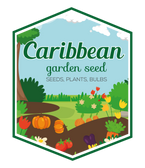
Camassia LEICHITLINII CAERULEA, BULBS, Wild Hyacinth
FAST & FREE SHIPPING
Over 90% of our orders are processed and ship out by next business day.
We are currently processing and shipping most orders within 1-3 business days. (backorders not included) Due to high demand during the peak months of January to May, orders may require additional time for packaging /shipment.
Free shipping for orders over $54.95. Excludes live plants, fresh products And Stackable Black Plastic Nursery Crate
Shipping and handling charges will cover outbound freight and packaging materials. Fees are applicable to all orders, based on total order value pre-tax. Expedited services can be selected at Checkout with extra fees.
- Free shipping to lower 48 states on orders $54.95+
- (Most Items), excluding live plants, plant bulbs, and black plastic nursery crate.
- Safe Seed Pledge
- Satisfaction Guaranteed
- Select your desired size and/or color from the available options.
Wild Hyacinth
» Native to western North America, Camassia naturalizes well in gardens.
» Camassia grows best in well-drained soil high in humus.
» Camasia may be dividen in autumn after the leaves have withered.
Camassia cusickii
Plant/Bulb
Camassia cusickii, common name Cussick's camas, is a species of plant in the Asparagaceae family. It is native to parts of North America. It has linear leaves with parallel venation and flowers in parts of three.
Camassia Cusickii
Camassia Cusickii also known as Wild Hyacinth have tapering spikes of heavenly blue florets adorn these easy going plants. In USDA zones 5-7, they will not need to be lifted during dormancy. Plant them in well-drained soil in a full sun position.
A Pacific Northwest U.S. native that’s been cultivated commercially in the Netherlands for a long time, C. cusickii is best grown in moist, fertile soil in full sun to partial sunlight. Unlike most bulbs, it prefers soil that has a bit more moisture. Deer- and rodent-resistant, C. cusickii forms ever substantive clusters of linear strappy foliage around upright racemes studded with dozens of six-petaled, 2”, star-shaped pale wisteria-blue flowers with yellow anthers and whisper-green centers. The flowers open sequentially from the bottom to the top. Commonly known as the Wild Hyacinth, Camass, Quamash or Leichtlin’s camass, C. cusickii, circa 1888, is incredibly valuable since it naturalizes well when left undisturbed in a good spot, and since it blooms in the blank period between the big Narcissus and Tulip spring show and the big summer show when perennials and annuals hit their colorful strides. As it matures over time, when it’s happy where it’s planted, it naturalizes by bulb offsets (called bulbils: baby bulbs on the sides of the mother bulb you’ve planted).
You’ll need four bulbs per square foot. (Square footage is determined multiplying the planting site’s length times its width.) Bulb size: 14 cm/up. Full to partial sunlight. Height: 24” to 30”. Bloom time in horticultural zone 5: May/June. Plant 5” deep and 5” apart. If it’s planted near a stream or pond, make sure to plant it above the high water mark. Even though Camassia likes soil with a bit of moisture, it can not be submerged in water. HZ: 4-8.
How to Grow Camassia Bulbs:
1. In the Fall, choose a spot that is mostly sunny or has only partial shade.
2. Planting camassia bulbs is fairly simple. Bulbs look much like a small onion, with wiry roots growing out of one site and a spike on the other. Plant with the roots pointing down and the spike pointing up.
4. Follow the rule of thumb of planting bulbs that bulbs need at least 2 times their height of soil above them. Dig a 4-5 inch hole, drop the bulb into it and cover with soil.
5. Regarding spacing between bulbs, if planting in beds, leave approx 8-10 inches between each bulb. If you are planting in containers, you can cluster them a little closer together.
5. After planting, water well so that the soil above the bulbs settles.
6. Camassia bulbs will flower in the early summer. After the flowers die down, the plant can enjoy a warmer rest period. You don't have to water too much during this rest period. Leaves will also die back and at this point, you can choose to tidy up the plant and remove the old leaves or just let nature take its own course.
HOW TO GROW GUIDE
LET OUR CUSTOMER SPEAK FOR US

![[Seeds] - Caribbeangardenseed](http://caribbeangardenseed.com/cdn/shop/files/gift-card-gift-card-1_1024x1024_dfa857db-9150-4315-a362-7f0bb3fb9c47_60x28.png?v=1722895789)







